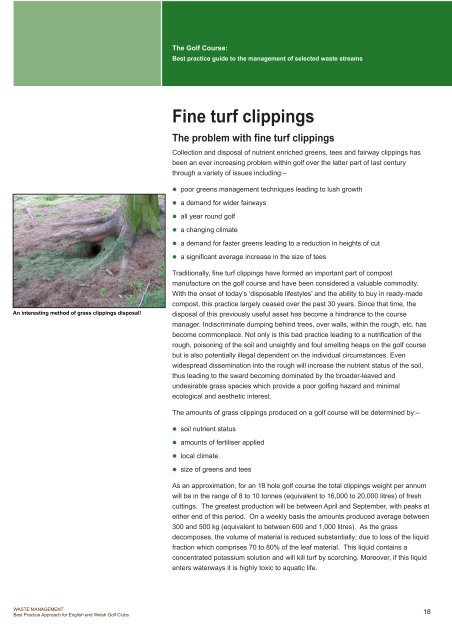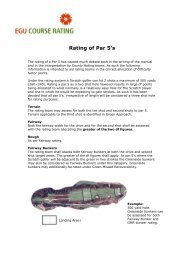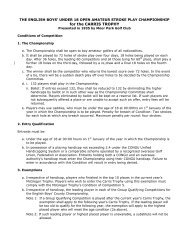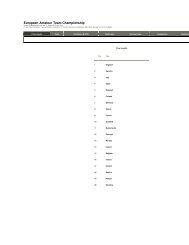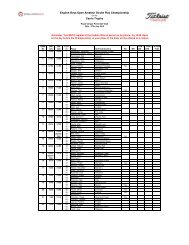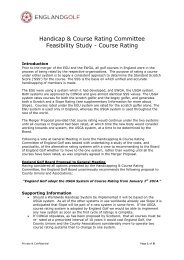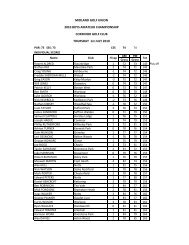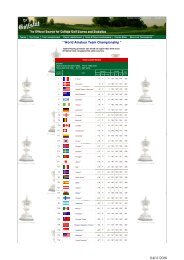Waste management - England Golf
Waste management - England Golf
Waste management - England Golf
Create successful ePaper yourself
Turn your PDF publications into a flip-book with our unique Google optimized e-Paper software.
The <strong>Golf</strong> Course:<br />
Best practice guide to the <strong>management</strong> of selected waste streams<br />
Fine turf clippings<br />
The problem with fine turf clippings<br />
Collection and disposal of nutrient enriched greens, tees and fairway clippings has<br />
been an ever increasing problem within golf over the latter part of last century<br />
through a variety of issues including:–<br />
poor greens <strong>management</strong> techniques leading to lush growth<br />
a demand for wider fairways<br />
all year round golf<br />
a changing climate<br />
a demand for faster greens leading to a reduction in heights of cut<br />
a significant average increase in the size of tees<br />
An interesting method of grass clippings disposal!<br />
Traditionally, fine turf clippings have formed an important part of compost<br />
manufacture on the golf course and have been considered a valuable commodity.<br />
With the onset of today’s ‘disposable lifestyles’ and the ability to buy in ready-made<br />
compost, this practice largely ceased over the past 30 years. Since that time, the<br />
disposal of this previously useful asset has become a hindrance to the course<br />
manager. Indiscriminate dumping behind trees, over walls, within the rough, etc. has<br />
become commonplace. Not only is this bad practice leading to a nutrification of the<br />
rough, poisoning of the soil and unsightly and foul smelling heaps on the golf course<br />
but is also potentially illegal dependent on the individual circumstances. Even<br />
widespread dissemination into the rough will increase the nutrient status of the soil,<br />
thus leading to the sward becoming dominated by the broader-leaved and<br />
undesirable grass species which provide a poor golfing hazard and minimal<br />
ecological and aesthetic interest.<br />
The amounts of grass clippings produced on a golf course will be determined by:–<br />
soil nutrient status<br />
amounts of fertiliser applied<br />
local climate<br />
size of greens and tees<br />
As an approximation, for an 18 hole golf course the total clippings weight per annum<br />
will be in the range of 8 to 10 tonnes (equivalent to 16,000 to 20,000 litres) of fresh<br />
cuttings. The greatest production will be between April and September, with peaks at<br />
either end of this period. On a weekly basis the amounts produced average between<br />
300 and 500 kg (equivalent to between 600 and 1,000 litres). As the grass<br />
decomposes, the volume of material is reduced substantially; due to loss of the liquid<br />
fraction which comprises 70 to 80% of the leaf material. This liquid contains a<br />
concentrated potassium solution and will kill turf by scorching. Moreover, if this liquid<br />
enters waterways it is highly toxic to aquatic life.<br />
WASTE MANAGEMENT<br />
Best Practice Approach for English and Welsh <strong>Golf</strong> Clubs<br />
18


